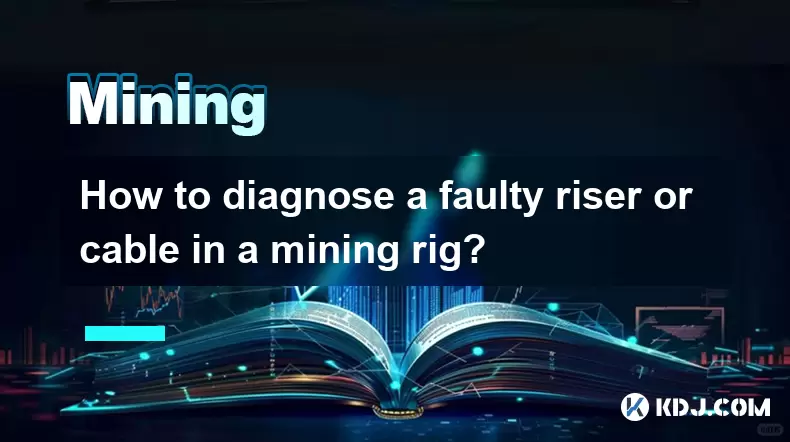-
 Bitcoin
Bitcoin $115100
1.27% -
 Ethereum
Ethereum $3675
2.71% -
 XRP
XRP $2.995
1.45% -
 Tether USDt
Tether USDt $1.000
0.02% -
 BNB
BNB $769.8
2.64% -
 Solana
Solana $168.0
3.25% -
 USDC
USDC $0.9999
-0.01% -
 TRON
TRON $0.3371
1.48% -
 Dogecoin
Dogecoin $0.2051
3.36% -
 Cardano
Cardano $0.7394
2.30% -
 Hyperliquid
Hyperliquid $38.15
0.42% -
 Stellar
Stellar $0.3966
-0.36% -
 Sui
Sui $3.486
2.93% -
 Chainlink
Chainlink $16.72
2.52% -
 Bitcoin Cash
Bitcoin Cash $568.0
4.36% -
 Hedera
Hedera $0.2440
2.59% -
 Ethena USDe
Ethena USDe $1.001
0.04% -
 Avalanche
Avalanche $22.16
2.06% -
 Litecoin
Litecoin $119.1
-0.73% -
 UNUS SED LEO
UNUS SED LEO $8.991
0.04% -
 Toncoin
Toncoin $3.232
-0.39% -
 Shiba Inu
Shiba Inu $0.00001233
2.82% -
 Uniswap
Uniswap $9.717
2.53% -
 Polkadot
Polkadot $3.664
1.85% -
 Dai
Dai $1.000
0.01% -
 Monero
Monero $281.2
-3.89% -
 Bitget Token
Bitget Token $4.350
1.55% -
 Cronos
Cronos $0.1428
5.07% -
 Pepe
Pepe $0.00001050
3.68% -
 Aave
Aave $262.3
3.54%
How to evaluate the value of other PoW currencies?
To evaluate PoW currencies, consider technical specifications (algorithms, security, efficiency), market factors (adoption, liquidity, community), growth potential, and risks (energy consumption, attack susceptibility).
Feb 24, 2025 at 06:18 pm

Key Points:
- Understand the fundamental principles of Proof-of-Work (PoW) consensus mechanisms.
- Analyze the technical specifications, features, and algorithms of different PoW currencies.
- Evaluate market factors, such as adoption, liquidity, and community support.
- Consider the potential for future growth and innovation in the PoW ecosystem.
- Assess the risks and limitations associated with PoW currencies.
Evaluating PoW Currencies:
1. Understand Proof-of-Work Consensus:
- PoW is a decentralized consensus mechanism that involves miners solving complex mathematical puzzles to validate and append new blocks to the blockchain.
- Miners receive rewards for successfully solving these puzzles, typically in the form of the native cryptocurrency, and the process of mining consumes significant computational resources and energy.
2. Analyze Technical Architecture:
- Examine the algorithm used for PoW mining (e.g., SHA-256, Ethash).
- Review the block time, block size, and difficulty adjustment mechanisms.
- Assess the security and efficiency of the underlying platform.
3. Evaluate Market Factors:
- Determine the adoption rate and support for the currency among users, exchanges, and businesses.
- Analyze the liquidity of the currency, both on centralized and decentralized exchanges.
- Gauge the strength and engagement of the community surrounding the currency.
4. Assess Growth Potential:
- Consider the roadmap and future development plans for the currency.
- Evaluate ongoing innovations and advancements in the PoW ecosystem.
- Explore the potential for the currency to be integrated into new applications and industries.
5. Consider Risks and Limitations:
- Acknowledge the energy consumption and environmental concerns associated with PoW mining.
- Assess the risk of potential attacks, such as double-spending or hash rate manipulation.
- Consider the volatility and price fluctuations that can occur in the cryptocurrency market.
FAQs:
Q: What are the main contenders to Bitcoin in the PoW landscape?
A: Prominent PoW currencies include Ethereum (ETH), Litecoin (LTC), Dogecoin (DOGE), Zcash (ZEC), and Dash (DASH).
Q: How does the PoW consensus mechanism differ from Proof-of-Stake (PoS)?
A: In PoW, miners use computational power to secure the network, while in PoS, validators stake their crypto holdings to validate transactions.
Q: What are the advantages of PoW currencies?
A: PoW currencies benefit from decentralized security, immutability, and resistance to censorship.
Q: What are the potential drawbacks of PoW currencies?
A: PoW currencies can be energy-intensive, slow to process transactions, and vulnerable to 51% attacks.
Q: Is it possible to have a sustainable and energy-efficient PoW cryptocurrency?
A: Innovations such as proof-of-work algorithms with lower energy consumption and renewable energy sources for mining operations can contribute to a more sustainable PoW ecosystem.
Disclaimer:info@kdj.com
The information provided is not trading advice. kdj.com does not assume any responsibility for any investments made based on the information provided in this article. Cryptocurrencies are highly volatile and it is highly recommended that you invest with caution after thorough research!
If you believe that the content used on this website infringes your copyright, please contact us immediately (info@kdj.com) and we will delete it promptly.
- BlockDAG, Litecoin, and Cardano: Charting the Course in Crypto's Dynamic Waters
- 2025-08-07 09:09:06
- Fireverse Token: Igniting a Musical Revolution in Web3
- 2025-08-07 08:27:45
- Ethereum, L2 Withdrawals, and Decentralization: A New Yorker's Take
- 2025-08-07 08:32:33
- Avalanche vs. Ruvi AI: Daily Sales Tell a Story of Crypto Disruption
- 2025-08-07 06:29:35
- DeSoc: The Crypto to Buy Now for a Decentralized Future (and Maybe 43x Gains!)
- 2025-08-07 06:50:16
- Arctic Pablo Coin: Riding the Meme Coin Wave with a Deflationary Twist
- 2025-08-07 07:18:13
Related knowledge

What is "proof-of-work" and how does it relate to mining?
Aug 07,2025 at 02:03pm
Understanding the Concept of Proof-of-WorkProof-of-work (PoW) is a consensus mechanism used in blockchain networks to validate transactions and secure...

What are the differences between mining on Windows vs. Linux?
Aug 06,2025 at 11:29pm
Overview of Cryptocurrency Mining PlatformsCryptocurrency mining involves using computational power to solve complex cryptographic puzzles and validat...

How to use an old computer for cryptocurrency mining?
Aug 07,2025 at 12:42pm
Understanding the Feasibility of Using an Old Computer for MiningUsing an old computer for cryptocurrency mining may seem outdated, but it is still te...

Can you mine cryptocurrency using solar power?
Aug 07,2025 at 12:00am
Understanding the Basics of Cryptocurrency MiningCryptocurrency mining involves validating transactions on a blockchain network by solving complex cry...

How to build a mining rig inside a PC case?
Aug 06,2025 at 11:01pm
Understanding the Basics of a Mining Rig in a PC CaseBuilding a mining rig inside a PC case involves transforming a standard computer chassis into a d...

How to diagnose a faulty riser or cable in a mining rig?
Aug 07,2025 at 01:49am
Understanding the Role of Riser Cables in Mining RigsIn a cryptocurrency mining rig, riser cables serve as the bridge between the motherboard and the ...

What is "proof-of-work" and how does it relate to mining?
Aug 07,2025 at 02:03pm
Understanding the Concept of Proof-of-WorkProof-of-work (PoW) is a consensus mechanism used in blockchain networks to validate transactions and secure...

What are the differences between mining on Windows vs. Linux?
Aug 06,2025 at 11:29pm
Overview of Cryptocurrency Mining PlatformsCryptocurrency mining involves using computational power to solve complex cryptographic puzzles and validat...

How to use an old computer for cryptocurrency mining?
Aug 07,2025 at 12:42pm
Understanding the Feasibility of Using an Old Computer for MiningUsing an old computer for cryptocurrency mining may seem outdated, but it is still te...

Can you mine cryptocurrency using solar power?
Aug 07,2025 at 12:00am
Understanding the Basics of Cryptocurrency MiningCryptocurrency mining involves validating transactions on a blockchain network by solving complex cry...

How to build a mining rig inside a PC case?
Aug 06,2025 at 11:01pm
Understanding the Basics of a Mining Rig in a PC CaseBuilding a mining rig inside a PC case involves transforming a standard computer chassis into a d...

How to diagnose a faulty riser or cable in a mining rig?
Aug 07,2025 at 01:49am
Understanding the Role of Riser Cables in Mining RigsIn a cryptocurrency mining rig, riser cables serve as the bridge between the motherboard and the ...
See all articles

























































































